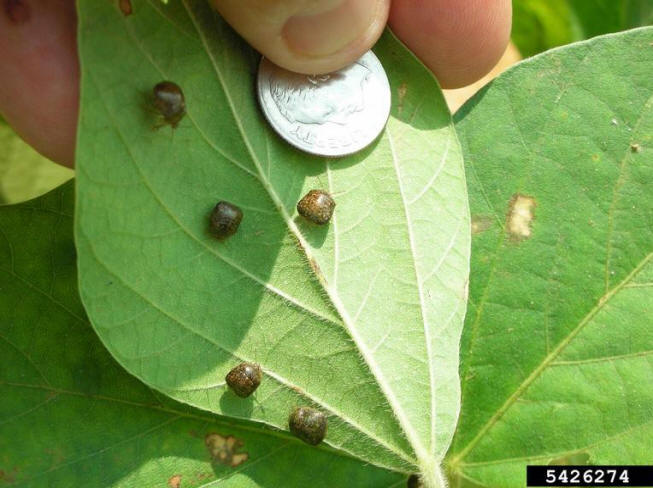Invasive Kudzu Bugs stink, stain, and spread in East Tennessee

"We knew it was coming. We tried to prepare everybody because this insect is very invasive. They've only been in this area [Tennessee] since last year and already we're getting calls about seeing them in large numbers," said Karen Vail, UT Entomologist. "Last summer they had just made their way into Tennessee from Georgia and now they're all the way up here in Knox, Sevier, and Anderson Counties. We just added Anderson County last week."
In the last year the Kudzu Bug's distribution has also grown to include Monroe, McMinn, Rhea, Blount, Loudon, and Roane Counties. The tide of Kudzu Bugs has flown into new territories with no native predators to slow them down.
"You hear Kudzu Bug and you think that's a good thing. It does feed on Kudzu, but not enough to do any elimination of the plant. This thing is a real pest to our crops and our homes," said Vail.
Kudzu Bugs generally go through a couple of life cycles per year. When they emerge from cover in the spring, they lay eggs on Kudzu and feed on the plant until adulthood. Those adults then move on to spawn another generation of Kudzu Bugs on soybean plants and other crops that emerge later in the year.
"They can reduce soybean yields by 47 percent," said Vail.
When UT agricultural extension agent Neal Denton learned this week of the confirmed arrival of the Kudzu Bug, two words quickly came to mind.
"Oh crap," said Denton. "I say that because after being in South Carolina last fall and seeing these things, they were literally on everything in every nursery we went to. They're just a real annoyance."
On Monday afternoon, 10News shot video of hundreds of Kudzu Bugs in the Kudzu patch along the Alcoa Highway in South Knoxville. After the insects feed on kudzu and crops, they will want to spend the winter in your home.
"You'll see them clustering by the hundreds of thousands to make their way in to try to over-winter," said Vail. "The Kudzu Bug is also a stink bug. It releases an odor as a defense mechanism. On top of that, if you squash them they can also stain your skin and irritate it."
Vail says start pest-proofing your home now and get rid of the Kudzu Bug's spring-time food supply.
"For us homeowners that have Kudzu patches nearby, now is the time to get rid of the Kudzu if you can. Also take a look at your home. Make sure you seal those cracks and crevasses. With your vents, make sure they are screened so they cannot get into your attic," said Vail.
The University of Georgia maintains a great online resource to identify and track the spread of Kudzu Bugs at the website kudzubug.org. The website features an updated distribution map to show where the bugs' presence has been confirmed.
Scientists also ask the public to help track the spread of the Kudzu Bug with a smart-phone app for the Southeast Early Detection Network. To see a list of ways you can help scientists with invasive Kudzu Bugs, visit http://www.kudzubug.org/detector.html.